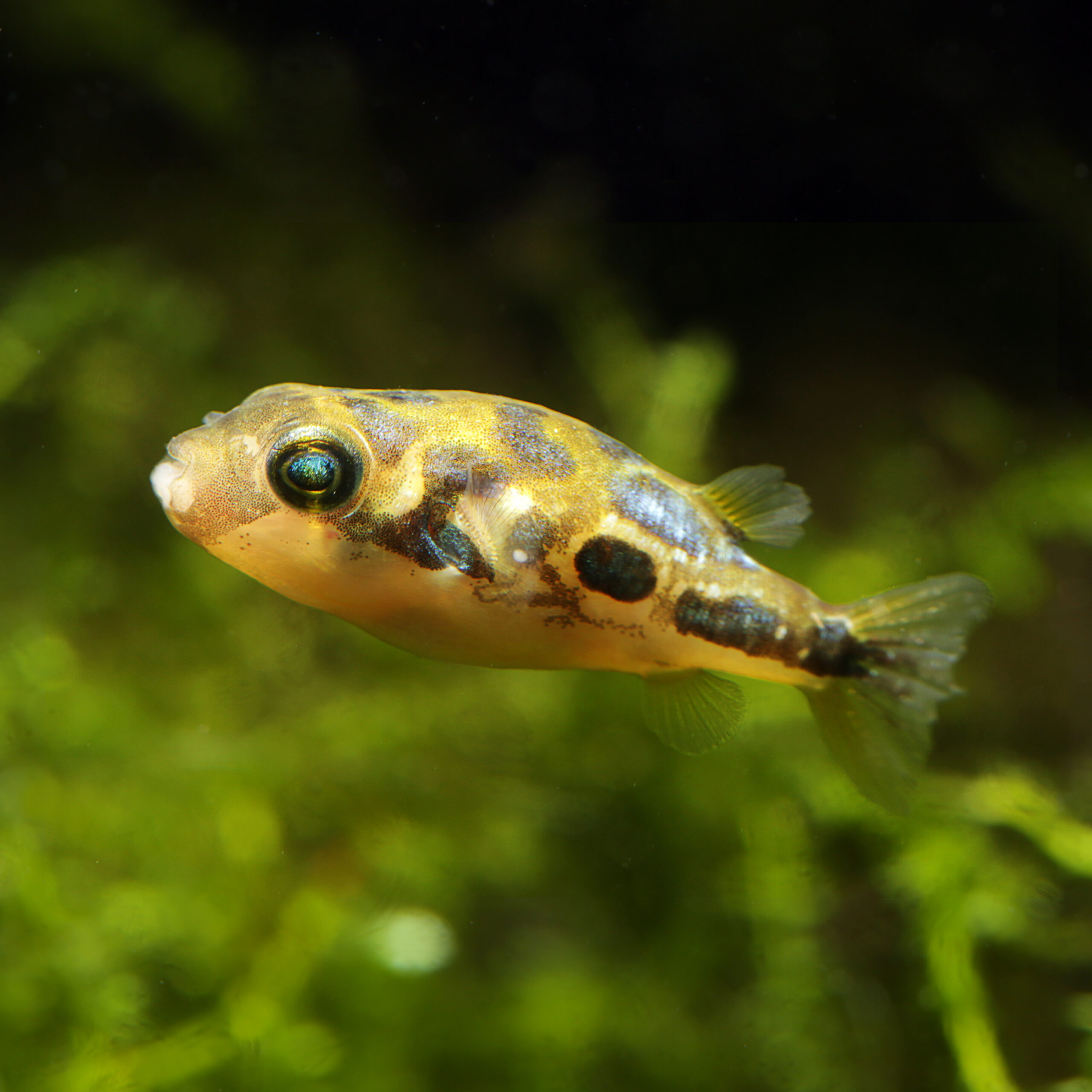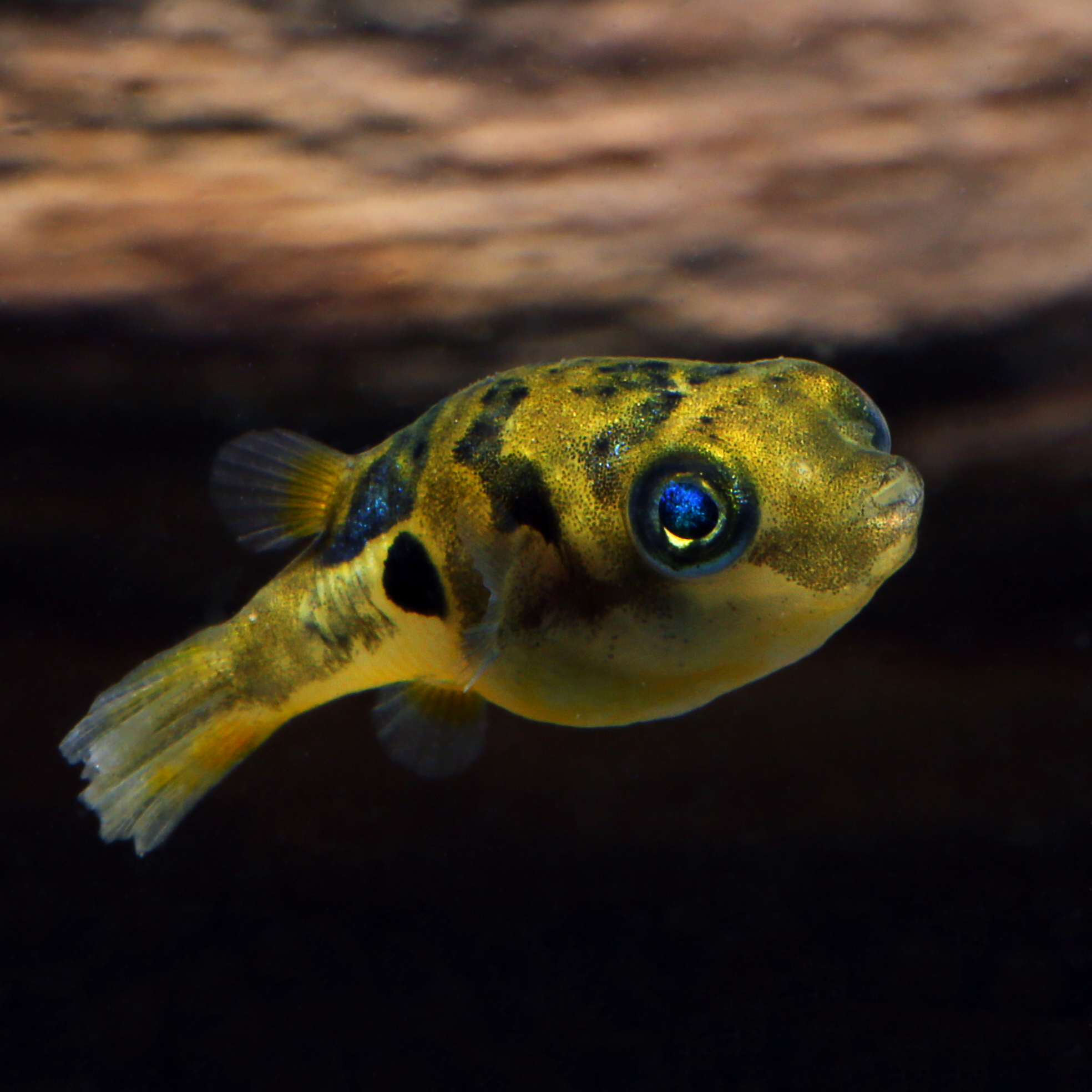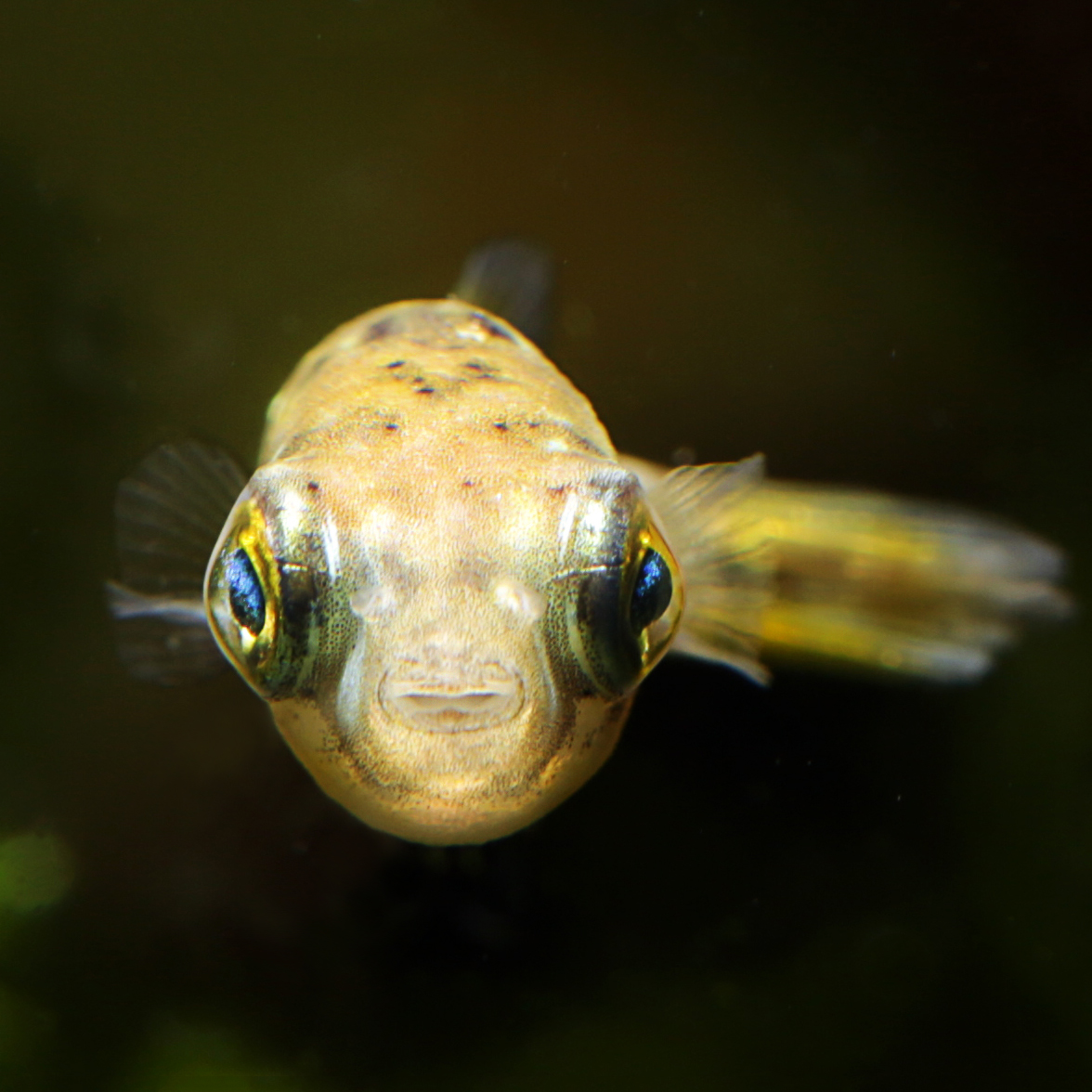Pea Pufferfish
Carinotetraodon travancoricus
The Pea Pufferfish is one of the smallest freshwater puffer fish and delights with its cute appearance.
- small freshwater puffer fish
- cute appearance
- great character animal
- snail eater
1 in stock
 Delivery in a few working days
Delivery in a few working days
 Free shipping from €60 across Austria
Free shipping from €60 across Austria





Important data
Product description & details
The Pea Pufferfish (also known as Pea Puffer or Dwarf Pufferfish) is a very cute, alert and inquisitive fish that only grows to about 4.5 cm. It occurs naturally in India and Sri Lanka, where it inhabits moderately flowing to stagnant, heavily herbaceous freshwater bodies of water. It is particularly pretty to look at because of its yellow basic color with a dark pattern of spots. The round body shape and the relatively large eyes also give it a very cute appearance.
Care in the aquarium
In terms of keeping, the Pea Pufferfish can be classified as moderate. It doesn’t place too high demands on the water parameters, but there are certain basic conditions that have to be met in order for it to do really well and it is not the best fish for a community tank. Despite its small size, the Pea Pufferfish needs a relatively large amount of swimming space. A suitable base area would be 60×30 cm, for example. Even if the Pea Puffer is not a schooling fish, we recommend keeping it in a group of at least 10 animals so that it shows its curious nature. In groups that are too small, it can be much more fearful and shy. If the Pea Pufferfish is to be socialized with other fish, it must be well fed. The otherwise very peaceful fish tends to nibble on the fins of other fish when there is a lack of food. Since the Pea Puffer is a somewhat slower-eating fish, it should also not be socialized with fish that are too greedy and fast-eating.
Feeding
As a food specialist, the Pea Pufferfish absolutely needs snails in its food supply, as it needs them to keep its teeth short and survive. In an emergency, it also accepts a wide variety of live and frozen food (preferably mosquito larvae); however, this cannot completely replace the feeding of snails.
Sexual characteristics and breeding
It is very difficult to distinguish between the sexes in Pea Pufferfish, but males are characterized by a somewhat more intense coloration. These tiny creatures can be bred in the aquarium under optimal conditions. In order to stimulate the willingness to spawn, the temperature should be raised a little and the Pea Pufferfish should be well-fed. The 1 – 1.5 mm small eggs are attached to fine-leaved plants or mosses. Since Pea Pufferfish are spawn predators, the eggs should be transferred to their own rearing tank. These are fully developed after about a week to 9 days. The freshly hatched puffer fish should only be fed with small live food for the first time after about 3 – 4 days.







